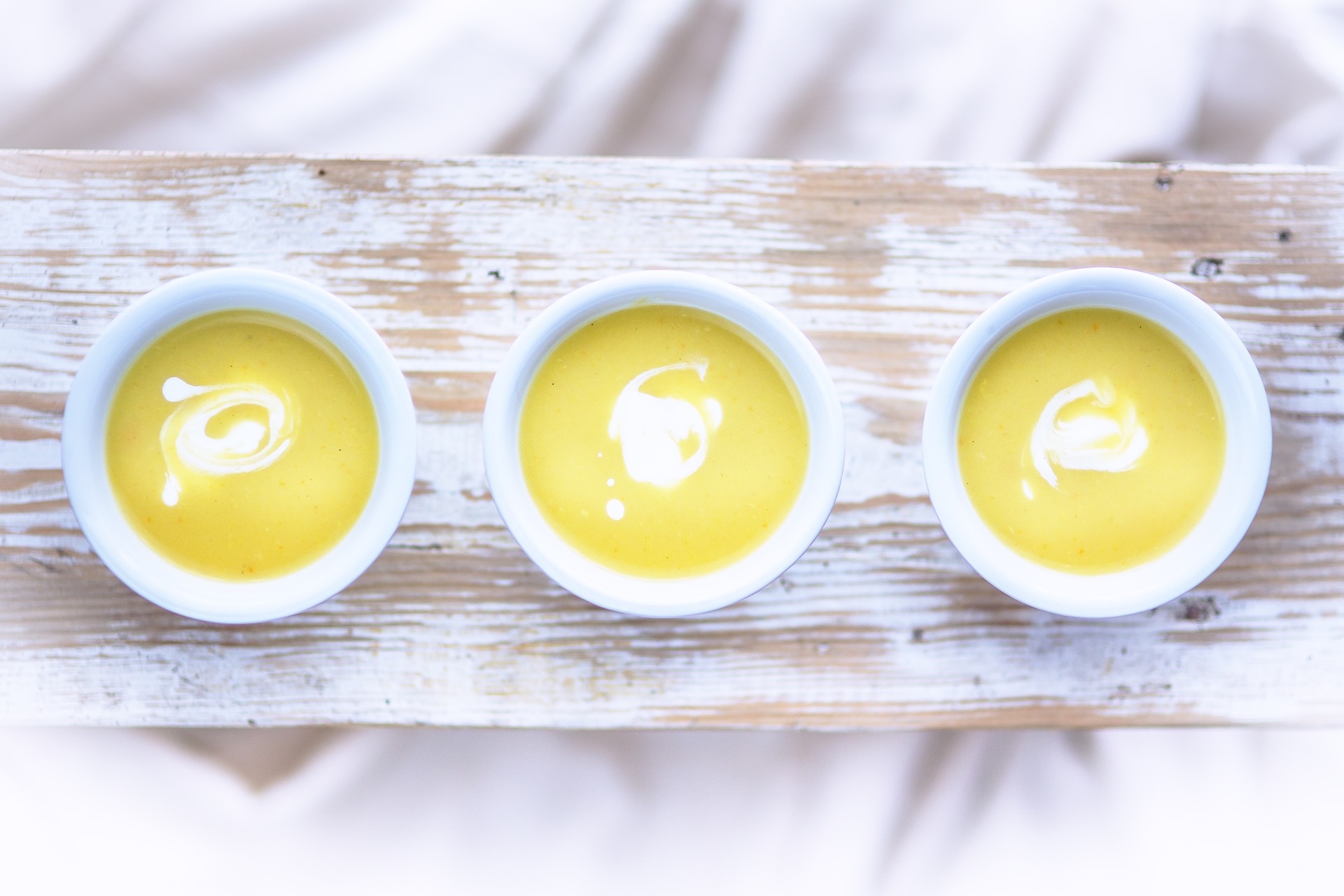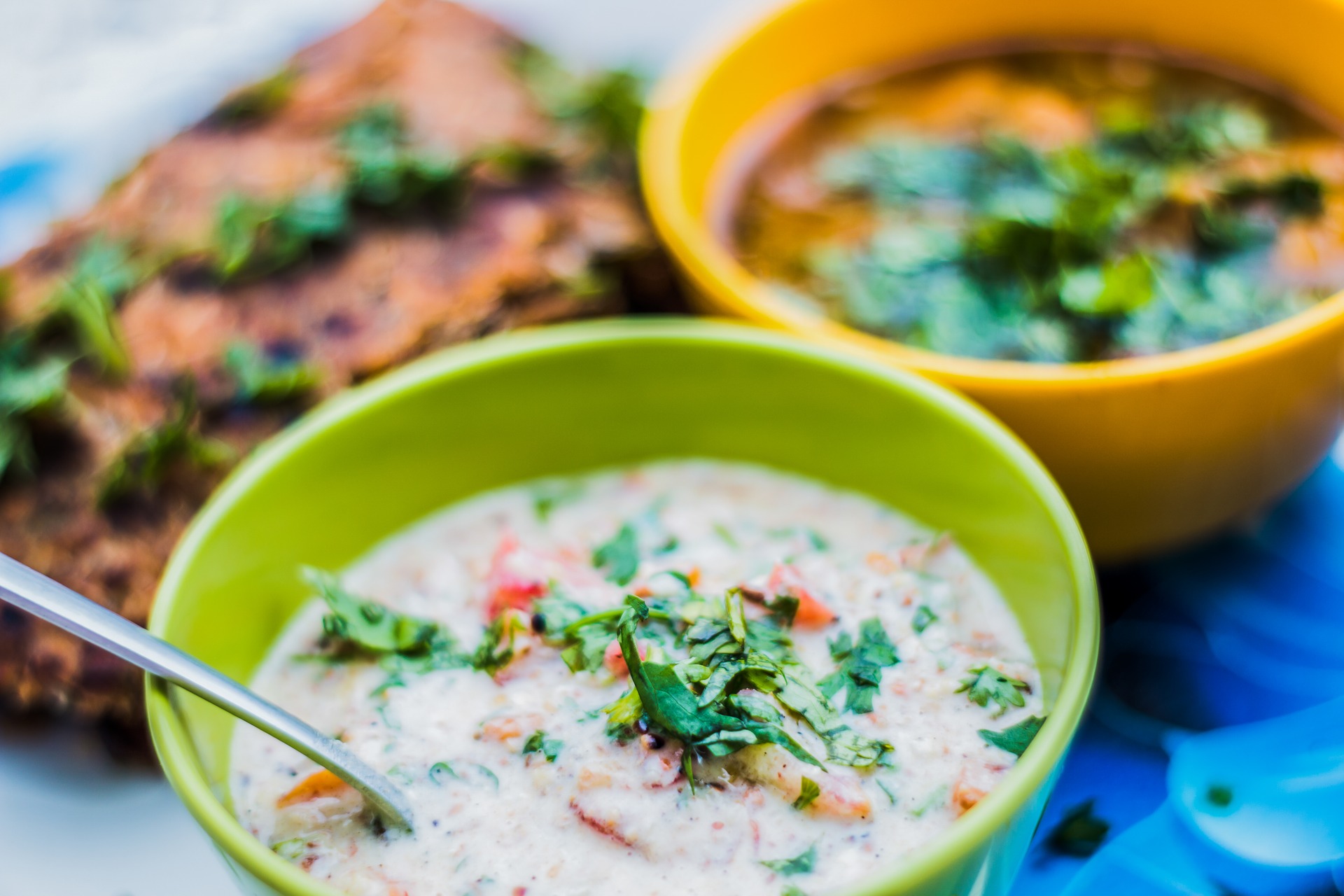Yogurt is widely used in Indian and Middle Eastern cooking and has become a popular ingredient in many western dishes as well. However, curdled yogurt can potentially ruin your entire dish and your day!
In order to stop yogurt from curdling when cooking, be careful not to raise the temperature too quickly, avoid adding acids like lemon juice and also refrain from adding salt. All of these components can increase the risk of denaturing the yogurt.
Yogurt is a healthy alternative to using cream or sour cream in recipes. Today we’re going to help you to use this healthier option without curdling, while still adding a smooth and velvety texture to any recipe.
Table of Contents
Methods for Preventing Curdled Yogurt
The main reason yogurt curdles while cooking is the accelerated rise in temperature. Heat, or salt or acid for that matter, causes the protein in yogurt to denature, which is what causes curdling.
The trouble is that heat, salt, and acid all encourage curdling in yogurt, while fat and dissolved solids such as starch prevents it. The key to preventing curdling is to avoid rapid changes in any of these components and you’ll be sure to have a delicious, creamy meal to enjoy.
Here are some ways to stop your yogurt from becoming curdled.
"Tempering" The Yogurt
The best method to prevent a rapid rise in temperature is to make sure your yogurt is room temperature before adding it to your dish. But if you don’t have the time or patience to let your yogurt acclimate, you can slowly add hot liquid from your dish to the yogurt and whisk it in.
This is more effective than adding yogurt directly to the dish because you are in control. This is known as “Tempering.” It enables a slow rise in temperature, thus preventing curdling. Alternatively, you can let your dish cool before stirring in the yogurt, then warm it again without bringing it to a boil, to ensure your sauce is smooth and creamy.

Using High Fat Content Yogurt
To save your dish from curdling, ditch the nonfat yogurts. You can still use them in salad dressings and smoothies, but full fat yogurts work much better for cooking. Nonfat yogurts have a higher protein to fat ratio which makes them more vulnerable to curdling. Fat protects yogurt by binding to the proteins preventing the heat, salt, or acid from denaturing them.
Therefore, full fat yogurts are less likely to curdle and ruin your dish. Buffalo’s milk has a high fat content, so yogurt made from buffalo’s milk is widely used in traditional Indian cooking for this very reason. If you don’t have buffalo’s milk yogurt, try greek yogurt or one made from full fat cow’s or goat’s milk.
Stabilizing The Yogurt
If low-fat yogurt is all you have or this is your preference, then you can stabilize your yogurt by adding cornstarch or flour before cooking. This decreases the risk of curdling and prevents the yogurt proteins from denaturing. Stirring in ½ to 1 teaspoon of cornstarch or 2 teaspoons of flour per cup of yogurt will work wonders. Bear in mind that if you add too much, it may thicken the sauce.
Additionally, try to use less acidic ingredients in your dish and add these only at the end. Acid denatures the proteins in yogurt the same way heat does with the same end result of curdling. If you follow these simple tips, your yogurt will maintain its creamy texture and add just the right touch to your recipes.
Frequently Asked Questions
Can I fix curdled yogurt?
If you’ve already spent hours prepping and slaving over your stove to make this mouth watering dish, only for the addition of yogurt to turn it into an oily mess, then you’re probably pretty panicked by now. I have to admit, once curdled, yogurt is hard to fix, but all is not lost.
First, remove your dish from the heat and whisk to try to dissolve the curds. If this is not successful, scoop or strain out the solid ingredients, add 2 more tablespoons of yogurt and a teaspoon of flour to the sauce and whisk until creamy. Try this technique and you’ll have a good chance of bringing your creation back to life and saving dinner for your family.
Is it safe to eat curdled yogurt?
Curdled yogurt will not harm you and is fine to eat as long as it is still fresh and doesn’t smell spoilt. Curdling may affect the texture of a cooked dish, but it still tastes fine. Always check the “use by” dates on the container. Yogurt can last up to 2 weeks if kept refrigerated, but out of the fridge, it will only survive around 2 hours before it spoils.
Sometimes yogurt can curdle in the fridge if left over time, with a light yellow liquid forming on top called ‘whey’. As long as it still smells good, you can stir the curds and whey back together for a smooth creamy texture. Alternatively, you can use a cheesecloth to separate the whey from the solid yogurt. Whey has high vitamin, minerals and protein content. You can drink it straight, add it to smoothies, or use it as a cooking liquid for potatoes, rice or pasta.

What temperature does yogurt curdle at?
Yogurt is more likely to curdle at or past boiling point or around 200 degrees fahrenheit. When heating yogurt try to heat gently and make sure it doesn’t boil. It is not necessarily the temperature that will affect the yogurt but the rate at which the temperature rises. So be sure to follow the tempering method to decrease the risk of curdling.
What ingredients commonly cause yogurt to curdle?
Yogurt is slightly acidic. When another acidic ingredient is added, the pH is lowered even more and the protein molecules stop repelling each other. This allows them to stick together and form the clumps known as curds.
Ingredients such as citrus (lemon or lime juices), vinegar, tomato based sauces, processed grains (such as white bread, white rice or white pasta) or red meats are likely to change the pH in the yogurt when cooking and enable curdling. They can be added at the end of cooking yogurt, when the temperature has dropped and curdling is less likely to occur.
How can I avoid curdled yogurt in curry?
To avoid yogurt curdling when you add it to the curry, try taking the yogurt out of the fridge earlier so it’s not too cold before adding it. Yogurt added at room temperature to a hot curry is less likely to curdle. Also be aware of other ingredients that makde yogurt curdle that you’ve added to your curry.
The western variations of Indian curries tend to incorporate cream and sugar, masking the authenticity of the Indian spices, whereas, it’s believed the use of yogurt helps to enhance them. As Indian chef’s have generations of experience cooking with this ingredient, the method of tempering is second nature to them.
Can yogurt be substituted for anything that doesn't curdle?
You can try sour cream, cream, buttermilk or cottage cheese as yogurt substitutes but you'll likely still have the same issues with curdling (unless you follow the above advice on avoiding it!). All of these produce a creamy texture in your dish, but the flavor will vary depending which of these and how much you use, so keep this in mind when choosing your substitute.
As plant based milk has exploded so has the various yogurt options. Coconut or soy milk yogurt, tamarind or even avocado on it’s own, can also be used as a vegan option for yogurt or cream dishes. These will easily add a creamy texture to your recipes.
